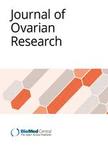版权所有:内蒙古大学图书馆 技术提供:维普资讯• 智图
内蒙古自治区呼和浩特市赛罕区大学西街235号 邮编: 010021

作者机构:ACECR Avicenna Res Inst Tehran Iran Bahman Hosp Infertil Ctr North Iran Zamin St Tehran Iran Givar Infertil Ctr Tehran Iran ACECR Dept Epidemiol & Reprod Hlth Ctr Res Reprod Royan Inst Reprod Biomed Tehran Iran Sarem Womens Hosp Sarem Infertil Ctr Tehran Iran Shahid Beheshti Univ Med Sci Cellular & Mol Biol Res Ctr Arabi AveDaneshjoo Blvd Tehran Iran IVI RMA Middle East Fertil Clin IVF Dept Abu Dhabi U Arab Emirates Womens Univ Hosp Tuebingen Tubingen Germany
出 版 物:《JOURNAL OF OVARIAN RESEARCH》 (卵巢癌研究杂志)
年 卷 期:2018年第11卷第1期
页 面:62-62页
核心收录:
学科分类:0710[理学-生物学] 1002[医学-临床医学] 100214[医学-肿瘤学] 10[医学]
主 题:Dress code Vitamin D deficiency Ovarian reserve Skin-type
摘 要:Background: In the recent years, vitamin D has become a topical subject and a focus of research not only in reproductive medicine but across many medical disciplines. In reproductive medicine, studies have identified an association between vitamin D status in women and ovarian reserve. In humans, exposure of the skin to sunlight is the main important source of vitamin D. A dress code of wearing concealing clothing is a risk factor for vitamin D deficiency. The objective of this prospective observational study was to evaluate the correlation between vitamin D deficiency and ovarian reserve in a population of infertile women in Iran. As part of the basic fertility assessment of study participants, blood tests were taken to measure vitamin D concentration and transvaginal ultrasound scans were performed on day 2-5 of the cycle to determine antral follicle count (AFC). All study participants were assessed by a reproductive medicine specialist and consultant dermatologist to classify their skin types according to the Fitzpatrick classification. In addition, the dress code of each study participant was recorded noting the percentage of exposed skin not covered by concealing clothing. Results: 189 infertility patients were included in this study. The mean concentration of vitamin D in this study population was 15.46 ng/ml, indicating severe vitamin D deficiency. A statistically significant negative correlation between age and vitamin D (p = 0.008) and age and AFC (p = 0.001) was identified. This study revealed a highly significant correlation between vitamin D concentrations and AFC (p 0.001). Conclusions: A concealing dress code is an independent risk factor for vitamin D deficiency due to a lack of skin exposure to sunlight. Our study suggests that the so caused severe vitamin D deficiency may play a crucial role in reduced ovarian reserve in the herein described group of an infertile female Iranian population.